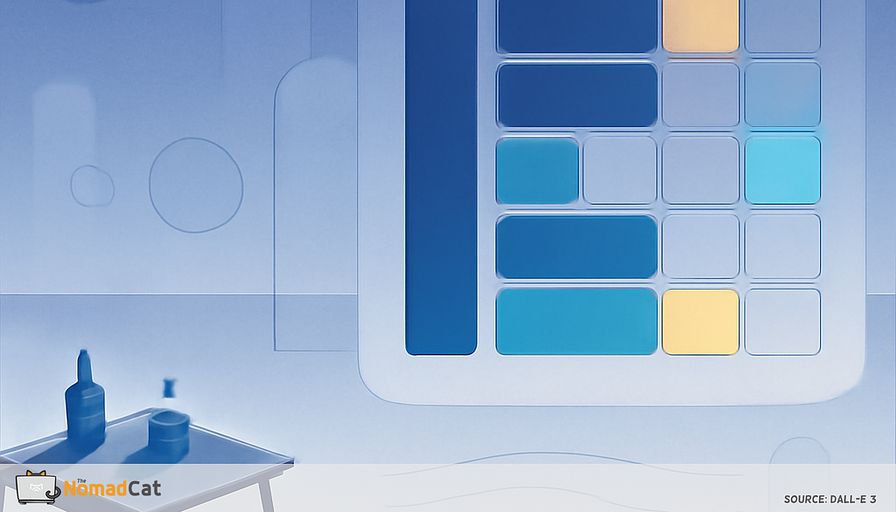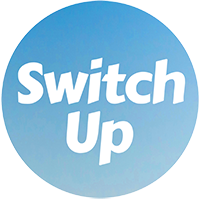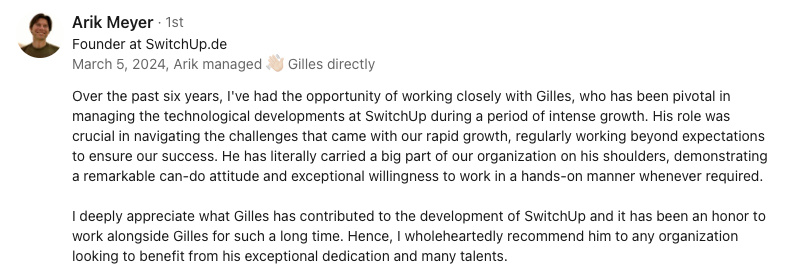Abstract:
The article explores the challenges and opportunities that arise when leaving the structured environment of corporate work for independent or freelance life, focusing on how the sudden absence of schedules, feedback, and routines can be both liberating and disorienting. Drawing on personal experience transitioning from corporate tech roles in Berlin and Beijing to a more flexible freelance life in Lisbon, the author describes the initial excitement—and subsequent anxiety—of facing a blank calendar. The core message centers on using minimalist weekly planning to rebuild a sense of focus, motivation, and balance: by establishing intentional limits, identifying essential routines (the “minimum viable week”), and integrating personal time without guilt, individuals can create a sustainable rhythm that avoids both burnout and aimless drifting. The article provides practical frameworks, such as visual planning tools, weekly review habits, and checklists, and includes real-world weekly templates for freelancers, product builders, and consultants to illustrate how to blend structure with flexibility. Emphasis is placed on unlearning unhelpful corporate habits, defending personal boundaries, and prioritizing well-being alongside productivity. Through simple, repeatable rituals—setting weekly intentions, reviewing progress, and celebrating small wins—independent workers can steadily adapt their routines to fit their goals and lifestyle, making freedom both manageable and rewarding.
When structure disappears, a blank calendar can be both exciting and a bit unsettling. Many people leaving the routines of corporate life feel energized at first by the sudden freedom. But without meetings, deadlines, and feedback, things can quickly feel strange. The lack of structure makes it easy to fall back on old habits or feel lost, wondering why independence isn’t as freeing as it seemed.
I remember my own “Day 1” after leaving a tech leadership role in Berlin. I woke up in my new Lisbon apartment, sun streaming through the window, and realized—no meetings, no Slack pings, no one waiting for my input. To mark the moment, I brewed a strong coffee, snapped a photo of my makeshift desk (a wobbly IKEA table and a plant I’d rescued from the street), and posted a short announcement on LinkedIn: “First day building my own path. Wish me luck!” That tiny ritual made the freedom feel real—and a little terrifying.
This article explores what changes when work’s outside structure is gone, and how minimalist weekly planning can bring back focus, motivation, and balance. I’ll share simple ways to put intentional limits in place, build a “minimum viable week,” and find the right mix of structure and freedom. I’ll also point out early mistakes—like crowding your schedule or letting days get away from you—and offer easy frameworks so your week focuses on what really matters.
You’ll see real examples from my own journey and from freelancers, product builders, and consultants I’ve worked with. I’ll talk about unlearning office routines, protecting your personal time, and drawing boundaries that stick. There are also quick review habits, visual planning ideas, and a few tricks to keep things rolling.
The aim isn’t to stay busy all the time or chase productivity endlessly. It’s about finding a rhythm where you can make steady progress and still feel good. When you get this balance right, independence feels less overwhelming—and freedom lasts longer.
When structure disappears
Sudden freedom and its hidden shock
That first Monday after leaving a corporate job can feel empty. Where your calendar once had meetings and deadlines, now there’s nothing. At first, this feels like a reward. But the lack of routine and outside expectations can lead to unease. There’s a quiet nervousness—what to do with all this free time? For me, after years of running teams in Berlin and Beijing, the silence in my Lisbon flat was almost too much. I remember sitting at my desk, staring at my calendar, and feeling a strange mix of excitement and panic. I thought, “Now what? Should I start with email? Or maybe go for a walk?” The discomfort with open days hits fast: what seemed like a dream can trigger anxiety.
The missing feedback loop
Without daily check-ins, fast messages, or manager input, it’s easy to feel without direction. In corporate life, someone always lets you know you’re on track. Without that, priorities get unclear and motivation can drop. Old office habits—like waiting for approval or chasing praise—can linger, even if they serve no purpose. I noticed myself checking my inbox every hour, hoping for some sign I was still “doing it right.” It’s a strange feeling, this sudden silence. When I co-founded an IT services company in Beijing, I saw the same thing with my team: people missed the little nudges and feedback, even when they said they wanted more autonomy.
Old routines, new problems
Even outside the office, it’s common to keep fixed hours or fill days with meetings. These habits once helped but now add friction. You might find yourself still working nine-to-five at your kitchen table, planning calls that could’ve been emails, and wondering why freedom doesn’t feel flexible. I caught myself scheduling “standups” with myself—old habits die hard! Old routines can quietly erode your independence, making it hard to enjoy this new way of working. Recognizing these traps is the first step. Next is figuring out what snares usually pop up in the early weeks of going solo.
Pitfalls of the first independent weeks
Over-scheduling
One mistake I made early on: filling every hour with tasks. Driven by worry about income (Lisbon is cheaper than Berlin, but not free!) and old habits, I over-scheduled myself. I thought, “If I’m not busy, I’m not working.” But this led to exhaustion, not real progress. On the other hand, some people plan too little.
Under-planning
With no set agenda, days start to blend together. Without a plan, you can float from one distraction to another and forget how tricky it is to self-organize. The result: you skip important work and stress builds up. I once spent a whole Thursday “researching” productivity tools, only to realize I’d done nothing that actually moved my projects forward.
Urgent task drift
Urgent task drift pulls you toward putting out fires, answering emails, and ticking off easy to-dos, while skipping the big stuff. This keeps you busy without moving forward and slowly drains your energy. Minimalist planning can help keep you focused and working with intention.
The financial reality
Let’s be honest: the first month as a freelancer or indie consultant is financially stressful. I kept a spreadsheet tracking my “runway”—how many months I could survive without new income. Every expense felt risky. There were days I’d wake up at 3 a.m., wondering if I’d made a huge mistake. If you’re in a European hub like Berlin or Lisbon, you know the cost of living isn’t trivial. I learned to set a weekly “finance check”—just 10 minutes to review invoices, pipeline, and expenses. It helped me feel less anxious and more in control.
Minimalist planning: principles and tools
Why minimalist planning?
After a few weeks of chaos, I realized I needed a system. Not a corporate one, but something simple and flexible. I started tracking my time in a spreadsheet (old physics habits die hard), measuring how many “deep work” hours I actually got each week. When I limited my deep work sessions to two hours, I noticed a 30% increase in completed tasks over a month. That was a surprise! Metrics helped me see what worked, not just what felt good.
Key minimalist principles- Set intentional limits: Choose your working hours, group tasks, and create rules for when work begins and ends. For example, I keep admin work to Wednesday afternoons and never check email before 10 a.m.
- Build a “minimum viable week”: Borrowed from product development, this is the simplest group of routines and habits that keep you moving forward without an endless list of tasks. It’s your weekly starter pack, focusing on progress and well-being, not perfection.
- Track with checklists: I use a Notion board with columns for “This Week,” “In Progress,” and “Done.” It’s simple, but seeing tasks move gives a real sense of momentum.
- Review and adjust: Every Friday, I spend 15 minutes reviewing what worked and what didn’t. Sometimes I spot patterns—like too many meetings on Thursdays, or not enough buffer time.
- List your essentials: Planning, review, self-care.
- Set boundaries: Choose your working hours and let clients or collaborators know.
- Group similar tasks: Batch admin, calls, or creative work to reduce distractions.
- Add a weekly review: Save a few minutes each week for adjustment.
- Stay flexible: Be willing to tweak your plan when things change.
Balancing structure and flexibility
- List fixed commitments: Client calls, deadlines, recurring meetings.
- Block anchor activities: For me, Monday mornings are for planning, Wednesday afternoons for admin, Friday mornings for learning or creative work.
- Fill in flexible blocks: Deep work, creative projects, or spontaneous ideas.
- Use visual time-blocking: I color-code my Google Calendar—blue for deep work, green for admin, yellow for personal time. It’s not fancy, but it works.
- Leave buffer time: I aim for 15-20% of my week unscheduled. This helps when a client call runs long or a new opportunity pops up.
Plans need space for surprises. Buffer and transition periods—short breaks or empty slots—help handle mistakes, changes, or simple rest. Like scheduling 15 minutes off after a long call or leaving an afternoon free for breathing room. These breaks keep your week resilient and less stressful.
Building your first indie weekly template
Finding your anchors
Anchor activities give your week structure—deep work, admin sessions, or learning. These routines create rhythm and make sure essentials like key projects or skill-building don’t get lost. For me, mornings are for deep work, afternoons for admin, and Friday for learning or rest. This keeps things moving even with a flexible calendar.
Picking your true priorities
- Write every weekly task you might do.
- Sort urgent from important (the Eisenhower Matrix helps).
- Pick the handful that matter most.
- Mark these as your anchors.
- Let the rest fill in as needed.
With anchors picked, shape your calendar around what matters first.
Scheduling anchors first
Put your anchor activities in the calendar before anything else. Maybe Monday mornings go to projects, Wednesday afternoons to admin, Friday for learning or rest. Everything else—emails, errands, meetings—fills in around these important blocks. Reviewing and adjusting these anchors every week helps you notice what’s going well and what needs a change.
Planning for the unexpected
A good weekly plan leaves 15-20% of your week empty as a buffer for emergencies, overruns, or new projects. I learned this the hard way after a client call ran two hours late and wrecked my whole Thursday. Now, I always leave Friday afternoons open. Give personal priorities a set place in your week, not just as leftovers.
Integrating personal time without guilt
Protecting personal time keeps you motivated. Personal priorities—exercise, hobbies, family—work best as fixed calendar blocks. When I moved to Lisbon, I promised myself I’d garden every Thursday afternoon. Of course, the first month, I let work creep in. One week, I skipped gardening for a “quick” client call, and ended up working until 8 p.m. That’s when I realized: if I don’t defend my personal time, no one else will.
A simple checklist helps:
- Put personal time in your calendar.
- Tell clients these times.
- Treat them as seriously as work meetings.
Reframing guilt and building a rhythm
Dropping guilt over personal time is key for making independence sustainable. Rest and hobbies boost your work, not just your well-being. I used to feel guilty for taking a long lunch or going for a walk by the river. But after tracking my weekly output, I saw that breaks made me more productive, not less. Regular reviews help keep things working smoothly as life and work needs change.
Weekly review and reset
Lightweight weekly review habits
A quick end-of-week ritual helps separate work from rest. My minimalist review is: clear my inbox, update my priority list, check next week’s calendar, and close any open tasks. Fifteen minutes, max. This reset gives you a fresh start for the next week.
Adding a shutdown ritual—like checking unfinished tasks, picking top priorities for next week, and saying to myself, “this week is done”—makes switching off a lot easier. It’s like closing your laptop at the end of the day; your mind knows it can rest. These habits create a break between work and downtime. I feel less stress on Sunday when the prior week feels “closed.”
A small gratitude or wins log can add a boost. Each week, I write down something I’m grateful for or a little win—like finally fixing that bug or getting positive feedback from a client. Over time, this builds momentum and keeps you thinking about progress, not just problems.
Responsive adjustments
A weekly review isn’t only for looking back—it’s for making smart tweaks. Maybe shift your deep work session to a quieter time or batch admin work better. Changing things slowly keeps your plan working and cuts down stress. I use the Eisenhower Matrix and the Ivy Lee Method to sort tasks by urgency and importance. This helps me decide what to move or drop.
Buffer time softens any schedule bumps, absorbing surprises and keeping things steady. Protecting these open slots means you can adapt—no matter what the week brings.
Sample minimalist indie weeks
Freelance tech week template
A minimalist week for tech freelancers usually means focused mornings, themed afternoons, and fixed personal time. For instance, mornings can go to deep work—coding, writing, or design—while afternoons shift between admin, calls, and learning. Breaks are set mid-morning and mid-afternoon, with special slots for exercise or hobbies. Evenings and weekends are kept open for rest.
Sample tech freelancer week:
-
Monday-Friday:
- 08:30-11:00 Deep work (client projects, coding)
- 11:00-11:30 Break
- 11:30-13:00 Themed block (Monday: admin, Tuesday: calls, Wednesday: learning, etc.)
- 13:00-14:00 Lunch
- 14:00-16:00 Client work or project follow-up
- 16:00-16:30 Break
- 16:30-18:00 Personal slot (exercise, gardening, carpentry)
- Saturday-Sunday: Unscheduled, personal time
Product builder flow
For those building products, a minimalist week might mean grouping main project days together and protecting long, meeting-free blocks. For example, Monday and Tuesday are for coding or prototyping with no meetings, while Wednesday is for feedback and review. Thursday is set for learning or new ideas, Friday for review and future planning.
Consultant’s minimalist template
Consultants do best with clearly marked time blocks. For example, project work and calls sit in Tuesday and Thursday mornings. All admin goes to Wednesday afternoon. “Off” time—Friday afternoon and weekends—is kept free for hobbies, family, or rest.
Sample consultant week:
- Monday: Planning, learning, buffer
- Tuesday-Thursday: 09:00-12:00 Client work; 13:00-15:00 Admin or follow-up; 15:00-17:00 Open buffer
- Friday: 09:00-11:00 Review and wrap-up; after 11:00, personal time
- Weekends: Fully off
To turn these into action, visual aids and checklists can help structure any indie week.
Visual templates and minimalist checklists
Tools for visual planning
Seeing your week all at once helps you stay organized. I use Notion and Trello to move tasks between “This Week,” “In Progress,” and “Done.” When I ran a science popularization startup, we used a shared Trello board for everything—marketing, content, even team lunches. Now, I keep it simple: a digital board for work, a paper planner for personal stuff. Minimalist printable planners keep things clear, showing priorities and break times.
Core minimalist weekly checklist
A repeatable checklist makes weekly planning simple:
- Set anchor activities (deep work, admin, learning)
- Define work and personal time boundaries
- Add a weekly review
- Leave some slots open for buffer and rest
Minimalist planning also means letting go of old habits and defending your boundaries as you shape your own blueprint.
Unlearning corporate habits and protecting boundaries
Spotting and unlearning legacy habits
Old habits from corporate life often stick around. Suddenly, you run your own show but act as if you’re still in a big company—set 9-to-5, meetings for everything, big spreadsheets for every detail. These patterns seem familiar, but can hurt your independent work. I used to schedule “all-hands” with myself—ridiculous, but hard to stop! There are ways to spot and beat them.
Some common habits to watch for:
- Keeping a strict office schedule with no good reason
- Turning every idea into a meeting or email thread
- Making admin too complicated
Regularly reviewing helps you decide what to keep or change. Try these steps for unlearning:
- Test new routines—focused mornings, themed days rather than old office hours
- Move to flexible updates using tools like Trello or Notion
- Use simple checklists to lighten admin load
A weekly “stop, start, continue” list makes it easier to see which habits you want, which ones to tweak, and which to leave behind.
Building and defending boundaries
Setting clear work hours—and letting clients or partners know—matters, even when you work alone. It tells others when you are available and protects your personal time from work creeping in. Physical boundaries count too; using a plant or lamp at the edge of your desk can show where your work ends. In my Lisbon apartment, my desk is squeezed between the kitchen and the window. I put a little cactus on the edge—when it’s there, I’m “at work.” When it’s gone, I’m done.
Physical and digital boundaries help you switch off. Here are practical tips:
- Create a dedicated work spot, even if it’s small
- Turn off work alerts outside your hours
- Use agreements or onboarding to set client expectations
Simple rituals help make these boundaries stick. A morning walk in the countryside can start your workday. A short shutdown checklist can signal the end of the day. With real boundaries, it’s easier to build strong habits every week.
Quick wins for indie momentum
Simple weekly habits
Setting an intention early in the week sharpens focus. Just a few habits really help:
- Spend 15-30 minutes each week on planning and review. This keeps your actions in line with your goals and reduces stress.
- Write down a main intention or focus for the week. For example: “Finish a client deliverable” or “Save two afternoons for learning.” This keeps you grounded and makes it easier to skip distractions.
- End the week with a short shutdown and write one thing you’re grateful for or a small win. This act keeps you moving and ends the week with success.
A simple habit checklist:
- Plan and review for about 15-30 minutes
- Set a weekly intention
- Log gratitude or a win
These short rituals keep your week focused and motivation high.
Momentum through minimalist planning
Minimalist planning is about focus, not doing less. It’s like clearing away clutter so you have more room for what matters. Streamlined routines save brainpower, help beat burnout, and make steady progress possible.
With these habits, minimalist planning creates a base for long-term success. By focusing on the essentials, leaving space for rest, and making routines stick, you avoid overload and keep yourself motivated. Small changes—like a weekly review or a focus statement—can lead to steady, enjoyable workdays.
A blank calendar can feel both exciting and a bit daunting, but minimalist weekly planning gives you a straightforward way to turn all that empty space into something positive. By setting smart limits, anchoring your week around your real priorities, and keeping room for buffer and personal time, you can avoid both burnout and unproductive drifting. Small habits—like a quick review, clear boundaries, and focusing on what matters—help make independent work satisfying and sustainable. Letting go of old routines and guilt isn’t always simple, but it opens the way for a rhythm that balances progress with well-being. Every week is a new chance to experiment and adjust for a work life that truly fits—even if your desk is wobbly and your cactus keeps falling over.














